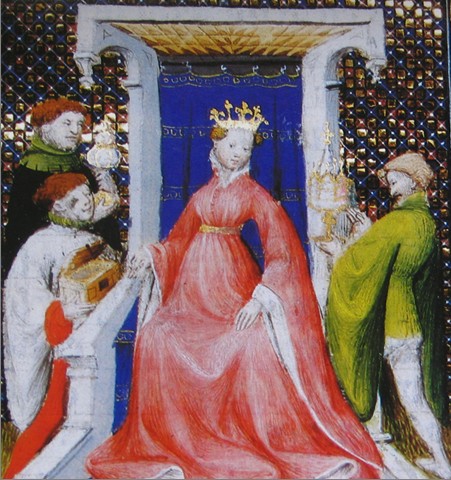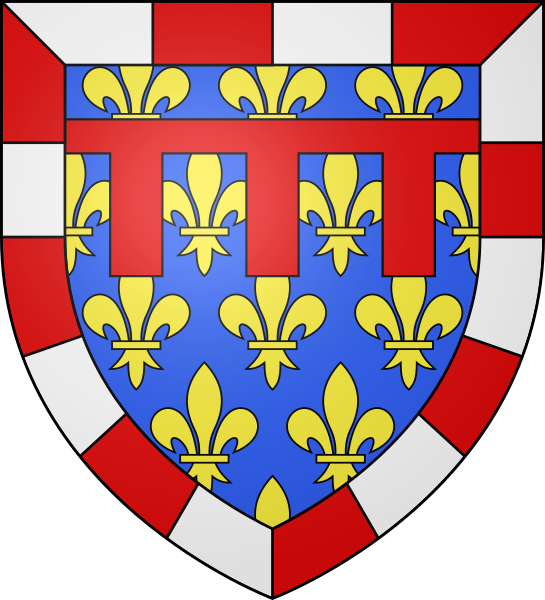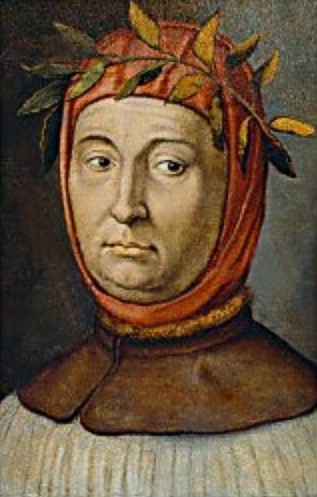 |
| Joanna of Naples |
The New Queen
On 22nd January Andrew was knighted in a private
ceremony at Castel Nuovo with three witnesses, including the notary and the
vice-Seneschal, Raymond of Catania[i]. Due to the period of
mourning for Robert, Andrew had to do without the feasts normally due on such
an auspicious occasion. Instead he immediately sprung into action as the Chronique of Parthénope[ii]
records;
‘On
the day of Wednesday, the 22nd of the month of January, as the
lately deceased King Robert had dictated….Andrew….appeared lawfully at
[Joanna’s] door at the Castel Nuovo, despoiled her and knew her carnally.’[iii]
Joanna and her advisers were well aware of the difficulties
that Robert had left by denying Andrew even a titular interest in the
government of the kingdom. One of the senior nobles, Hugo del Balzo, Count of Avellino, was appointed as ambassador
to the papal court. Hugo was to stand surrogate for Joanna to formally make
obeisance to the pope for the fief of Naples and to petition Pope Clement VI[iv] to permit Andrew to be
crowned king. In this way it was hoped that Andrew’s relatives could be
persuaded not to attack the status quo.
The Attractions of the New
Heir
 |
| Coat of arms of Charles of Durazzo |
Other relatives were eager to overset Robert’s will. Agnes
of Périgord had her eye on her younger niece’s dowry for her son Charles; the
14 year old Maria was wealthy in her own right in addition to her position as
heir to the throne.
Playmates from an early age, Maria and Charles got on well
together. And Agnes made sure of Sancia’s support for the marriage as well as
Joanna’s. Sancia wanted to reduce the Empress Catherine’s influence at court by
increasing the prestige and standing of the Durazzo branch of the family. For
Maria there was an added advantage; that she would not have to leave Naples,
her childhood home, to marry her cousin.
Agnes decided to petition the Holy See for permission to wed
Maria to her eldest son, Charles. Agnes used the services of her brother Hélie
de Talleyrand- Périgord, one of the most influential cardinals at the papal
court, to approach Clement[v]. Agnes offered her brother
22,000 florins[vi]
to arrange the marriage.
On 26th February Clement signed the bull allowing
Charles to marry any woman he liked, keeping the intended bride anonymous to
thwart ambitious relatives. The formal engagement took place at Castel Nuovo on
26th March. A furious Catherine protested to both Clement and Joanna
and called on the king of France to intervene.
On 28th Charles abducted Maria, taking her to his
neighbouring estate, where the couple were secretly wed. The marriage was
immediately consummated; in retaliation Catherine’s son Louis captured a
Durazzo castle and other properties. The Durazzos hit back and within weeks
Naples was on the brink of civil war.
Averting Civil War
 |
| Pope Clement VI |
Horrified by the resultant mayhem, Joanna refused to
recognise the wedding and declined to hand over Maria’s dowry. She wrote to
Clement complaining of Charles and Maria’s behaviour and demanding that the
wedding be annulled.
Clement was assailed by letters from angry relatives;
Philip of France and Elizabeth, the Queen Mother of Hungary, wrote as well,
objecting that the marriage was in contravention of the agreement made between
Hungary and Naples whereby if Joanna died, Andrew was to marry Maria.
Dismayed Clement wrote a scurry of letters; two to Joanna,
the second asking her to forgive the couple;
‘You,
as her sister, nourished and educated beneath the same roof, should palliate
these things so imprudently done and guide her back to the path of honour and
favour.’[vii]
And he wrote one to Maria;
‘The
marriage did please and does please us, but it would please us more but for
these sinister occurrences. Appease Joanna advisedly.’[viii]
Clement also wrote to Philip and Elizabeth disavowing all knowledge
of the lady Charles was going to wed. Cardinal Talleyrand sent his chamberlain
to smooth out matters and obtain his 22,000 florins. This he did, aided by the
fact that Maria was now pregnant[ix]. On 14th July
1344 agreement was reached whereby Charles was officially accepted as Maria’s
husband by the Neapolitan government who had to pay a large sum to Catherine.
An Unwelcome Visit
| Coat of arms of Andrew of Calabria |
The dust hadn’t settled when, on 25th July, the
dowager queen of Hungary arrived to visit her son. Elizabeth was concerned
about her son’s position vis-á-vis the throne. Despite Andrew being referred to
as king by the Neapolitans and deferred to, it was quickly borne on Elizabeth
that her son had no real standing in the kingdom and that Joanna had no
intention of changing that.
Trying to argue Joanna to give Andrew some power, Elizabeth
claimed that;
‘She
[Joanna] risked nothing in inviting her husband to lead the kingdom. All that
would be needed would be to set limits that he should not infringe upon.’[x]
Unable to get any change out of her daughter-in-law,
Elizabeth turned to the pope. Clement decided to send in a Papal Legate. The
Neapolitans were horrified and quickly sent Hugo del Balzo to remind the pope
that this was in contravention of the original 1265 agreement between the
papacy and Charles of Anjou.
Unfortunately for Joanna, a recession was imminent and
Hungarian gold would find a welcome in Clement’s pockets[xi]. The influential Florentine
trading houses of Bardi,
Peruzzi and Acciaiuoli[xii] had been forced to
invest their monies in the wool trade, following the failure of the Neapolitan
grain harvests in the 1330s. Now the wool trade was suffering too from Edward III’s ambitions as his war with the
French took hold[xiii].
Edward was refusing to pay back the loans he’d taken to pay for his own little
war.
A Tragedy Waiting to
Happen
 |
| Petrarch |
When the blow fell on 3rd August 1343 Sancia and
Joanna wrote in vain to the Florentine government asking for preferential
treatment in the distribution of assets. The Neapolitans had used the
Florentines as the financing arm of government and thus the recession bit
harder in Naples than anywhere else in Europe.
A further visitor arrived on 11th October;
Petrarch’s visit was the harbinger of future tragedy. He had come at the
instigation of his friend Cardinal Giovanni Colonna, to obtain the freedom of
the three Pipini brothers who had been jailed for being involved in the 1338
unrest in the kingdom, during which they had committed murder, rape, pillage,
arson and treason; a small army had been required to force their surrender.
Their properties had been divided between the Neapolitan courtiers upon their
conviction.
Despite audiences with Sancia and Joanna, Petrarch was
forced to admit failure; Joanna wrote to the pope explaining her decision;
‘These
prisoners could not presume to speak of innocence when no one is unaware of the
extraordinary abuse they perpetrated in the time of King Robert; devastation,
plunder, arson, murders and abuse of all kinds.’[xiv]
Frustrated by his failure Petrarch wrote to Avignon
complaining of the corruption of a dissolute kingdom; he ascribed the thwarting
of his mission to Friar Robert. Andrew suddenly became an advocate for the
Pipini and everyone that Elizabeth’s gold could influence now bombarded Avignon
with complaints about Joanna and her advisers.
On 28th November 1343 Clement issued a bull dissolving
the ruling council and prohibiting Joanna from exercising her sovereign rights
as queen. He named Cardinal Aimeric de Châtelus as Papal Legate with full
powers to rule in Naples.
Bibliography
Chronicles – Froissart, Penguin Classics 1968
The Holy Roman Empire – Friedrich Heer, Phoenix 1995
Joanna – Nancy Goldstone, Phoenix 2010
Absolute Monarchs – John Julius Norwich, Random House 2011
A Distant Mirror – Barbara Tuchman, MacMillan London Ltd 1989
www.wikipedia.en
[i]
One of the son’s of Joanna’s nurse, Philippa
[ii]
One of the official records of the time
[iii]
Joanna - Goldstone
[iv]
Benedict died two years earlier; Clement’s display of nepotism and wealth was
even more ostentatious than John’s
[v]
Hélie de Talleyrand-Périgord had engineered
Clement’s accession to the papal throne.
[vi] In 2013 the relative:historic standard of
living value of that income or wealth is £18,500,000.00 economic status
value of that income or wealth is £757,500,000.00 economic power
value of that income or wealth is £5,043,000,000.00 www.measuringworth.com
[vii] Joanna - Goldstone
[viii] Ibid
[x] Joanna - Goldstone
[xi]
One of many venal popes
[xii] Catherine’s lover was a member of this family
[xiii] The houses had been forced to underwrite Florence’s
war with Pisa, further reducing their capital
[xiv] Joanna - Goldstone
No comments:
Post a Comment
Note: only a member of this blog may post a comment.